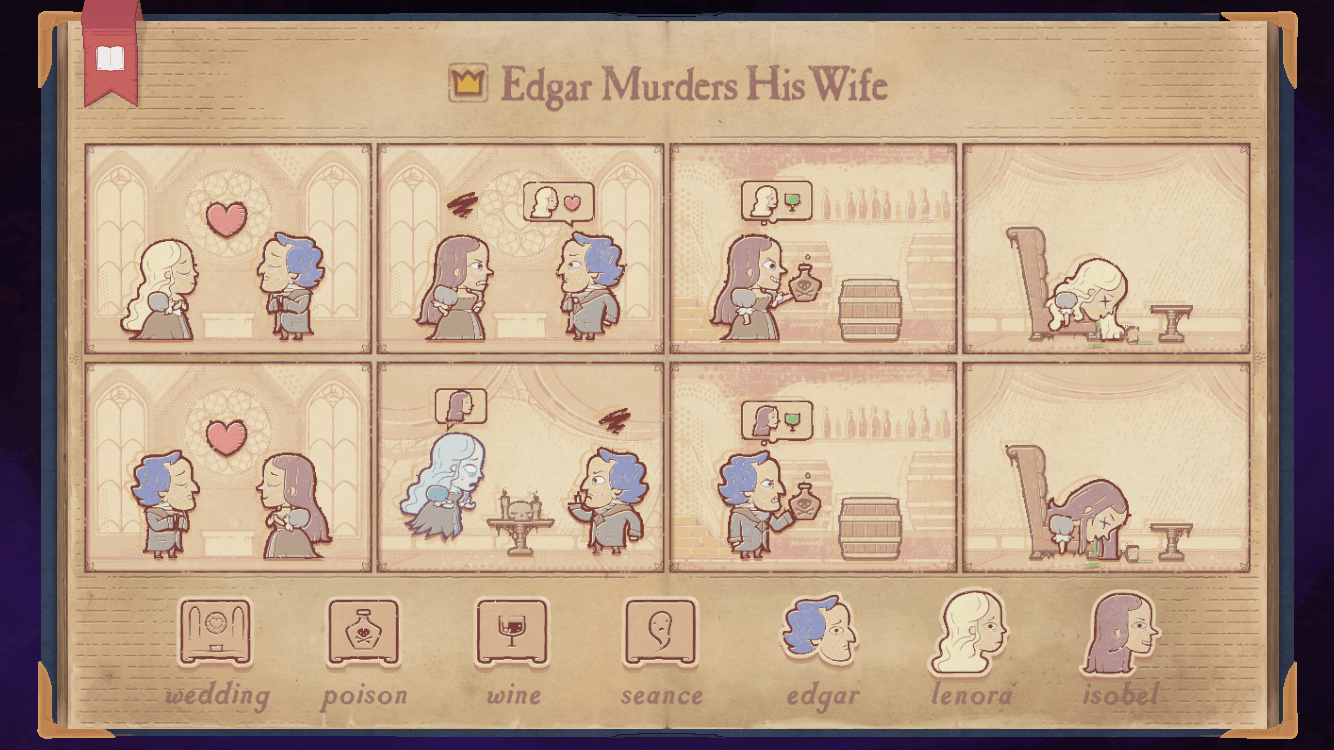Storyteller is a puzzle video game created in 2023 by Daniel Benmergui and published by Annapurna Interactive. It is available on Microsoft Windows, Nintendo Switch, iOS, and Android. Geared towards a 12+ audience, this game features a series of disabled comics that the player must puzzle together in order to build out the story. In this critical play, I argue that the game mechanics in Storyteller contribute to challenge being one dynamics I associate with the players’ experience. Furthermore, the mechanics necessitate an assumed cultural knowledge of the scenarios playing out in the comic in order to for players to solve them.
One of the main mechanics of this game involves selecting different components of a scene (characters, settings, etc.) and dragging and dropping them into the frames of the comic. However, this alone does not solve the puzzle. The arranging of these components must occur in a correct order that satisfies the one-sentence prompt describing the story above the frames. This creates a sense of challenge for the player, as they attempt to decipher which orders correspond to which outcomes of the story. In line with good puzzle-making practices, adding the components to a scene provides players with feedback. For example, when I was completing a level where a character was supposed to be sad at the end, the character’s visible emotion in the last frame of the comic clued me into whether I was on the right track, as it would change based on how the frames before played out. This made me feel a sense of challenge as I aimed to piece together the puzzle that would allow me to reach the right outcome of the story. Sometimes this involved logically piecing it out in my mind, and other times it involved me placing the components in the scene and seeing what type of feedback occurred. By the end of each level, I felt a sense of achievement in overcoming the challenge and having those “aha!” moments.
Another mechanic of the game was its increasing complexity over time. Earlier puzzles included a small number of characters, settings, and contexts to choose from and relatively simple plots to build from (i.e., love and heartbreak). As the game progressed, there were more options to choose from and increasingly complex plots to piece together. This allowed time for players to get used to the game before experiencing more difficult levels, mitigating the puzzles from being too challenging for users. It is because of strategies that I developed in earlier levels (i.e., playing around with the arrangement of components and seeing its feedback) that helped me get through challenging moments in later levels.
As mentioned above, I also believe that the mechanics of this game also contribute to an assumed cultural knowledge from players. As I was playing, some of the components were not exactly clear to me. For example, I did not know what a seance was, and therefore it was not immediately clear to me how it would be used to build out my story. It was then that I’d have to rely on visual feedback, however, it also was not initially clear to me which changes to prior frames would cause a change to the seance frame. The visual icon next to the title of the component clued me into the fact that it was something ghost-related. Eventually, I was able to sort it out, but had I known what a seance was, I probably would not have taken so long on this particular puzzle.

In summary, the mechanics of the game provide a sense of challenge to the player’s experience while assuming their cultural knowledge of the scenarios enacted in the game.


